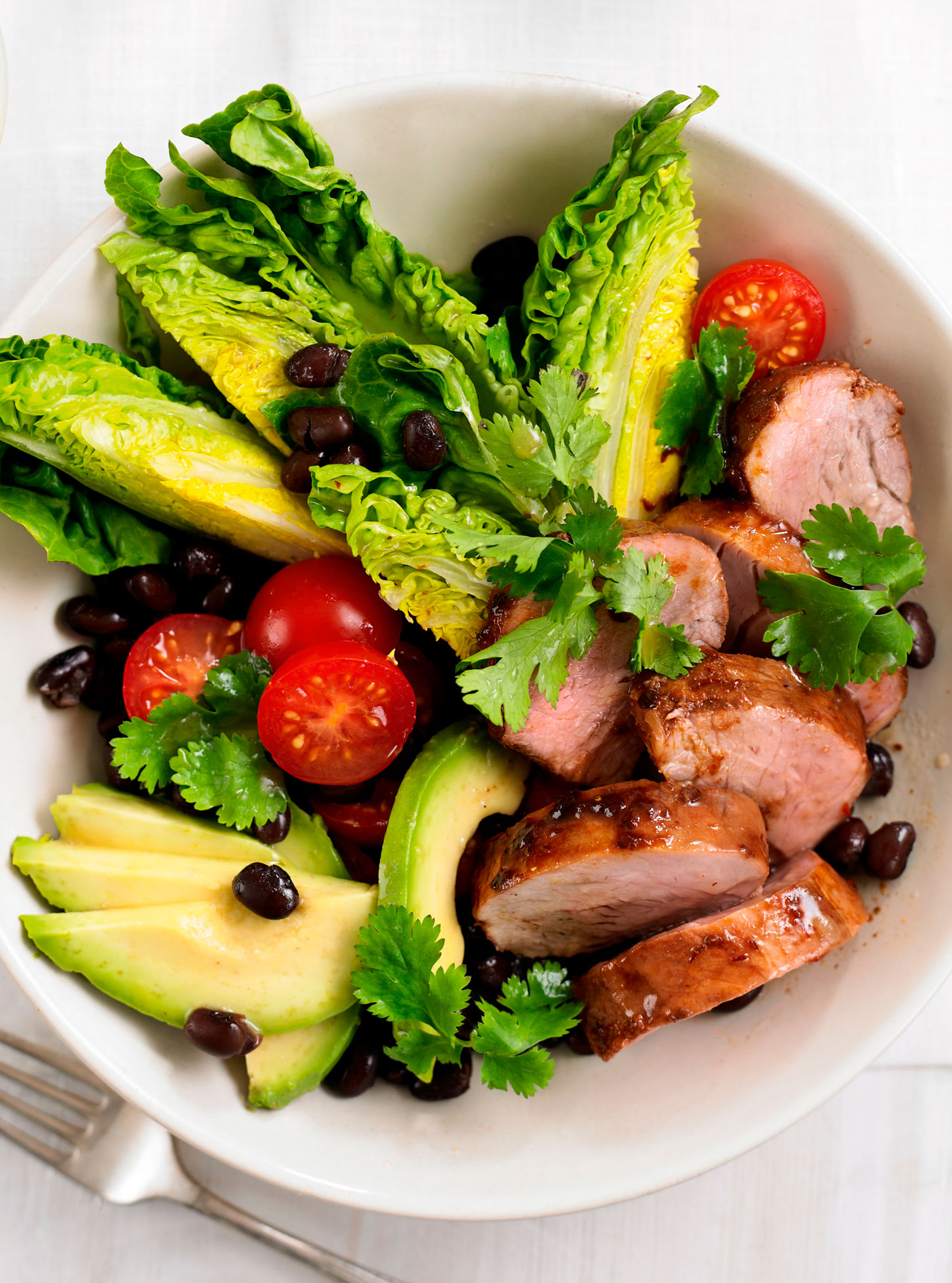Eat less and you will lose weight.
This simple piece of advice is true, but it's one that many of us struggle to follow.
It is easy to blame a lack of willpower or a penchant for
sugary, fat-laden snacks. And often weight does pile back on because
people revert to their old way of eating too much of the wrong foods.
But researchers say the reason so many of us relapse and fail on diets is because we have unrealistic expectations.
And this is not our fault but that of experts, because the advice they give us is flawed.
Long slog
Most people start dieting with the notion that they will start to see results fast.
Experts tell us that if we cut around 500 calories from our
daily diet, or burn them off exercising, then we can expect to lose 1lb
(0.5kg) in weight every week.
Continue reading the main story
“Start Quote
Studies show that somewhere between 50% and 80% of dieters will put weight back on”
Dr Kevin Hall of the US National Institutes for Health
The British Dietetics
Association, the NHS and the American Dietetic Association all say
losing weight at this rate is "about right" and that if you stick at it
for 12 months, for example, you will shed about 52 lb (26kg).
But US researchers from the National Institutes for Health
say this is a gross overestimation because the calculation used is
flawed.
They say it takes much longer to lose the weight - around three years to be precise, according to their work published in
The Lancet.
For example, a year of dieting will result in only half of the amount of weight loss that experts currently predict.
Dr Kevin Hall and colleagues say this explains why many of us
give up within months, because we expect unrealistic results that
cannot be achieved.
Studies of outpatient weight loss programmes show most dieters peak at six months with the pounds starting to creep back on after this.
Continue reading the main story
Counting calories
- The recommended daily calorie intake for men is 2,500 and for women is 2,000
- The lowest intake per day recommended for men is 1,500 and for
women is 1,200 calories, unless they are in a medically supervised
setting
Some, incorrectly, attribute this
to the body getting used to having less food and metabolism slowing
down. The dieter then feels that the regime is no longer working and
often gives up altogether.
Alternatively, as the slimmer begins to see the weight
falling off in the early months they are so pleased with their
achievement that they begin to relax and the diet slips. But because
weight loss is slow there is a lag phase where weight continues to drop
even though the person is now eating more. The dieter then mistakenly
concludes that they don't need to be so rigid with their diet in order
to lose weight.
But eventually, the weight will catch up with them and they
may well find they are now heavier than they were when they first
started the diet.
Dr Hall explains: "The slow timescale for weight change is
responsible for the gradual weight regain over many years despite the
fact that the original lifestyle was resumed within the first year.
"Studies show that somewhere between 50% and 80% of dieters will put weight back on."
He says professionals need to change the advice that they give to dieters so they don't fall into this trap.
Continue reading the main story
“Start Quote
We all recommend it - it's what we are taught. But I don't know what the scientific evidence for it is”
Helen Bond from the British Dietetic Association
"If you can give a realistic picture, that can inform people and help them make choices."
Dr Hall says the error occurs because the "500 calorie-cut a
day" sum fails to take account of how metabolism changes as we diet.
The mathematic equation relies on the assumption that one
pound of fat contains 3,500 calories, so to lose one pound a week a
person should consume approximately 3,500 fewer calories a week, or 500
fewer calories a day.
But in fact, weight loss is not this steady.
Natural fluctuations
Using knowledge about how the human body responds to changes
of diet and physical activity, Dr Hall's team have created a computer
program that they say gives a more realistic and reliable prediction of
weight loss.
Their calculations reflect the fact that one person may lose
weight faster or slower than another, even when they eat the same diet
and do the same exercise.
For example, heavier people can expect greater weight change
with the same change in diet, but it will take them longer to reach a
stable body weight than people carrying less fat.
Plus the body adapts rapidly to a reduced calorie diet, regardless of the type of food eliminated to get this reduction.
This means that all diets with similarly reduced energy
content will have the same effect in the short term, whether the food
cut out is fat or sugary carbohydrates.
 Habits can be hard to break
Habits can be hard to break
Dr Hall said: "We tested it on about 100 people and it gave a
good fit. It was pretty accurate, whereas the old rule does not fall
anywhere near.
"This means we can use it to make realistic predictions.
"The rough rule of thumb to go by is 10 calories per day per
pound. And it takes a year to lose half of the excess weight and three
years to get to 95%."
It's not clear why the advice was adopted in the first place.
Helen Bond, from the British Dietetic Association, admitted:
"We all recommend it - it's what we are taught. But I don't know what
the scientific evidence for it is.
"It stems from how much energy it takes to burn fat. A lot of diets are not proven by science."
She said some dieters might find it depressing to be told that it takes far longer to get weight down than previously thought.
"It's not very motivating to tell someone that if they cut
their intake by 10 calories a day every day for the next three years
they will lose a pound of weight.
"But saying 'cut out your daily habit of a 250-calorie
chocolate bar and you will lose about 25 pounds and, if you stick at it,
the weight will stay off' - that is."
However, Dr Hall says the computer model also shows how people can achieve more rapid weight loss if that is what they desire.
For example, someone could follow a very strict diet for the
first year to get rid of a large bulk of their excess weight and then
switch to a less restrictive diet to continue and maintain the weight
loss. Adding in extra exercise will also have an impact.
At the end of the day, it still boils down to willpower.
There is no quick fix to dieting and if you want it to work you need to
stick at it, says Dr Hall.
A healthy diet is for life, not just post-Christmas.
 A
balanced diet is a cornerstone of health. Women, like men, should enjoy
a variety of foods, such as whole grains, fruits, vegetables, healthy
fats, low-fat dairy and lean protein. But women also have special
nutrient needs and during each stage of a women’s life, these needs
change.
A
balanced diet is a cornerstone of health. Women, like men, should enjoy
a variety of foods, such as whole grains, fruits, vegetables, healthy
fats, low-fat dairy and lean protein. But women also have special
nutrient needs and during each stage of a women’s life, these needs
change.





















 Your diet has a major effect on your food cravings,
your stress levels, and your energy throughout the day. By making smart
food choices and developing healthy eating habits, you’ll find it much
easier to stay slim, control cravings, and feel energetic all day long.
Your diet has a major effect on your food cravings,
your stress levels, and your energy throughout the day. By making smart
food choices and developing healthy eating habits, you’ll find it much
easier to stay slim, control cravings, and feel energetic all day long. Fat and protein are
very important to your baby’s developing brain and nervous system.
Stick to lean sources of protein and healthy fats for weight control.
Fat and protein are
very important to your baby’s developing brain and nervous system.
Stick to lean sources of protein and healthy fats for weight control.






 Healthy eating is about more than the food on your plate—it is also about how you think about food. Healthy eating habits can be learned and it is important to slow down and think about food as nourishment rather than just something to gulp down in between meetings or on the way to pick up the kids.
Healthy eating is about more than the food on your plate—it is also about how you think about food. Healthy eating habits can be learned and it is important to slow down and think about food as nourishment rather than just something to gulp down in between meetings or on the way to pick up the kids. Fruits and vegetables are the foundation of a healthy diet. They are low in calories and nutrient dense, which means they are packed with vitamins, minerals, antioxidants, and fiber.
Fruits and vegetables are the foundation of a healthy diet. They are low in calories and nutrient dense, which means they are packed with vitamins, minerals, antioxidants, and fiber.